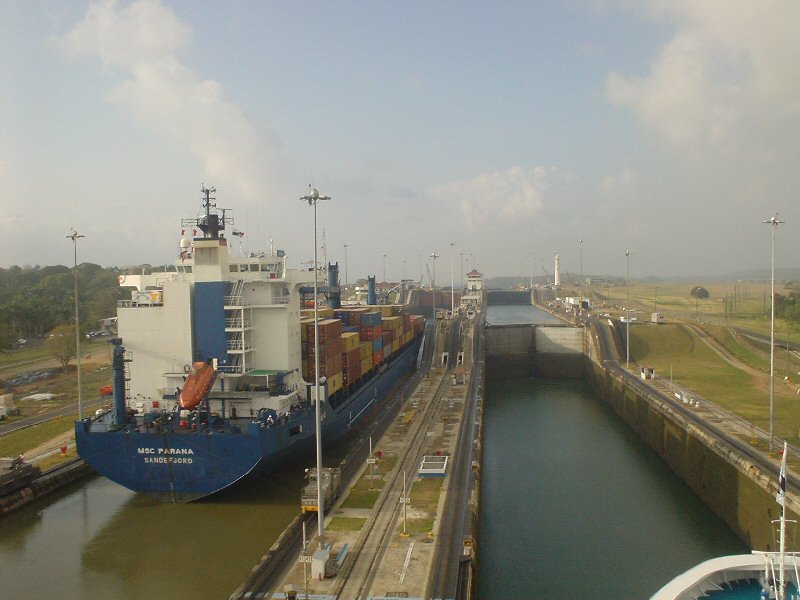Here is a great article that I saw in The Huff Post Contributed by Annie Scott Riley.
You may think you know all about the Panama Canal thanks to middle school social studies. Most people know that the Canal was built across the isthmus of Panama to save ships from having to go all the way around South America to connect the Pacific and Atlantic Oceans. In fact, you may even know it only takes 8-10 hours for a ship to pass through the canal’s three locks, known as the Miraflores, the Pedro Miguel and the Gatún. Even more impressively, you may not have just Googled “isthmus.” Still, as I learned on a recent trip to Panama, there’s a lot more to the story of the Panama Canal than you probably know. See if you knew any of these ten facts:
1. The Panama Canal couldn’t be built the same way as the Suez Canal, and nobody thought of that — well, at least nobody tried to stop France from attempting to build it that way for 10 years. Ferdinand de Lesseps, the French diplomat who led the development of the Suez Canal, worked on the Panama Canal from 1879 to 1889. He wanted to build a canal at sea level and avoid the use of locks, which allow ships to pass between different water levels. He had his workers dig into the land, just as they did with the Suez Canal. The trouble was, Panama’s climate is different: it has a dry season and a rainy season, and every rainy season, all the land they’d dug out would flow right back into the canal. Très frustrant. It wasn’t until 1905, after extensive engineering studies, that the US settled on building the locks.
2. Mosquitos very nearly prevented its existence. The other reason that de Lesseps failed was that malaria and yellow fever spread tragically and relentlessly through his workers via mosquito — but they didn’t know that. Thankfully, by 1904, 15 years after de Lesseps had left, the little bloodsucking culprits were found out, and countermeasures against the mosquito population made the Canal possible.
3. The Panama Canal is politically neutral. Since the Torrijos-Carter treaty in 1977, the Canal has been officially and permanently neutral, providing service to ships of all nations. This means that if any nation were to attempt to seize the Canal, every other nation in the world would have a problem with it. Pretty smart. Panama itself has no military, nor do they need one in order to protect the Canal.
4. The Panamanian government does not run the canal. The Panama Canal has its own board of directors who manage its operation and the allocation of the billions of dollars it generates each year. (A good chunk goes to the Panamanian government.)
5. Giant ships are built specifically to fit through the canal — the technical term is “Panamax.” The Panama Canal Authority openly publishes the maximum allowable dimensions for ships, which is evident when you see one pass through a lock — they only spare what appears to be few feet on either side of the massive vessels. Ships that are too large for the Canal are referred to as “post-Panamax.”
6. Trucks keep passing ships from hitting the sides of the locks. Even those Panamax ships move through the canal propelled by their own engines, so in order to keep them from grazing the sides of the locks, trucks are cabled to the front, back and sides of the ships. The trucks move forward and back on lock-side tracks to keep the cables taut and the ships in the middle of the locks.
7. The Panama Canal is expanding, and even deeper, even wider post-expansion plans are already being made. “Cause baby there ain’t no river wide enough, to keep me from getting to you, babe.” The $5.2 billion Panama Canal Expansion Program began in 2007 and will allow the passage of larger ships (ships which adhere to the “New Panamax” standards). The widened Panama Canal will still be smaller than some of the world’s largest container ships, so the Canal will likely be expanded again within a few years of the expansion’s completion. Bonus fact from my tour guide: the new lock system will have sliding, not swinging, gates.
8. You can walk across the gates. When those lock gates swing closed, people go marching right across them. See:
Bonus fact: those are the original gates, operational since the Canal’s opening in 1914.
9. East is west and west is east in the Canal. Seriously. Due to the curvature of the isthmus, one must travel west to get to the Atlantic Ocean, and east to get to the Pacific side. That’s messed right up.
10. The Panama Canal was Spain’s idea. Though it was first attempted by the French, completed by the Americans and is now controlled by Panama, the canal was actually the brainchild of King Charles V of Spain in the early 1500’s, and he even began a study of the feasibility of the project which would begin 350 or so years later. Today, a bust of Charles V stands in Panama City’s Casco Viejo (“Old Town”) in commemoration of his vision.
